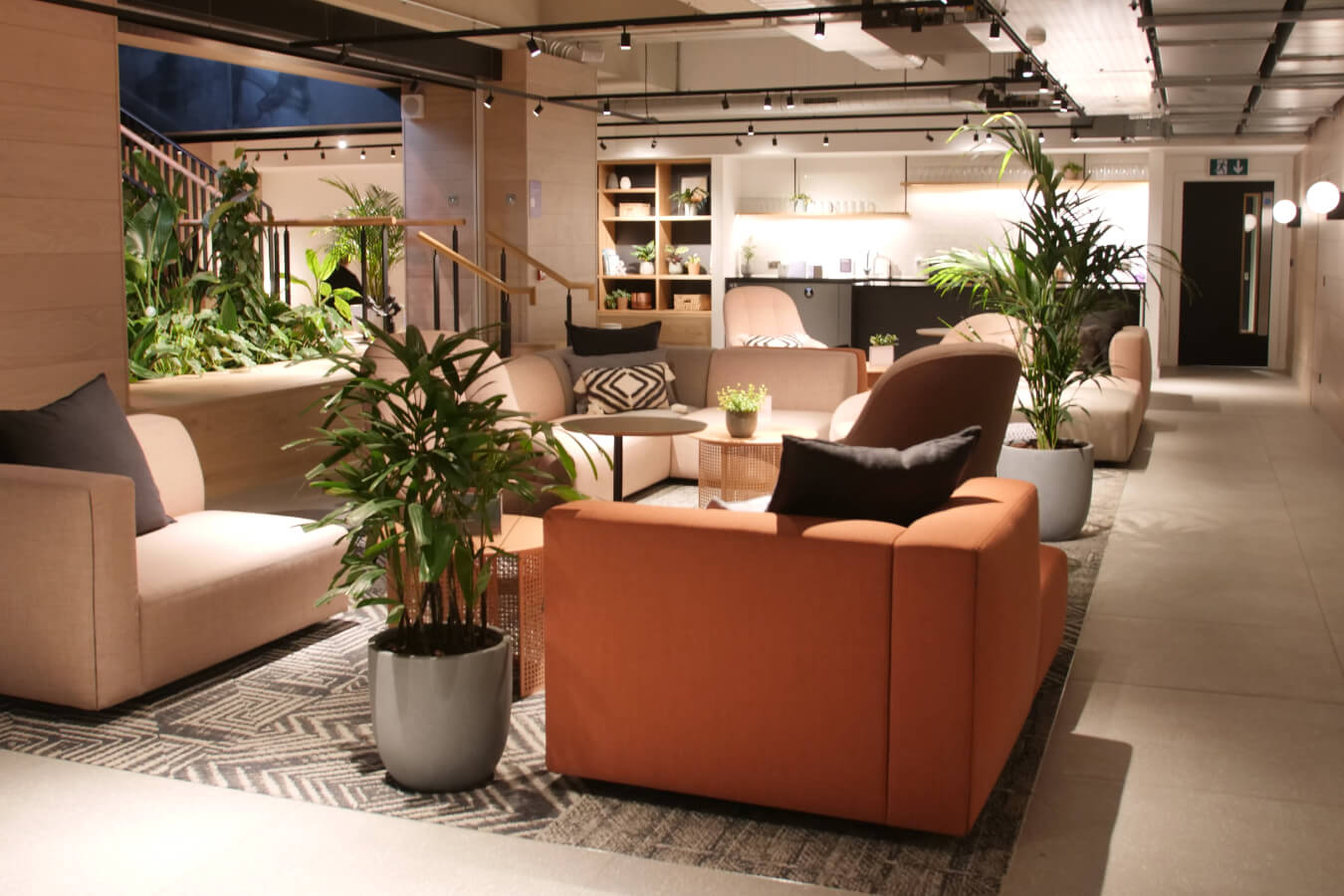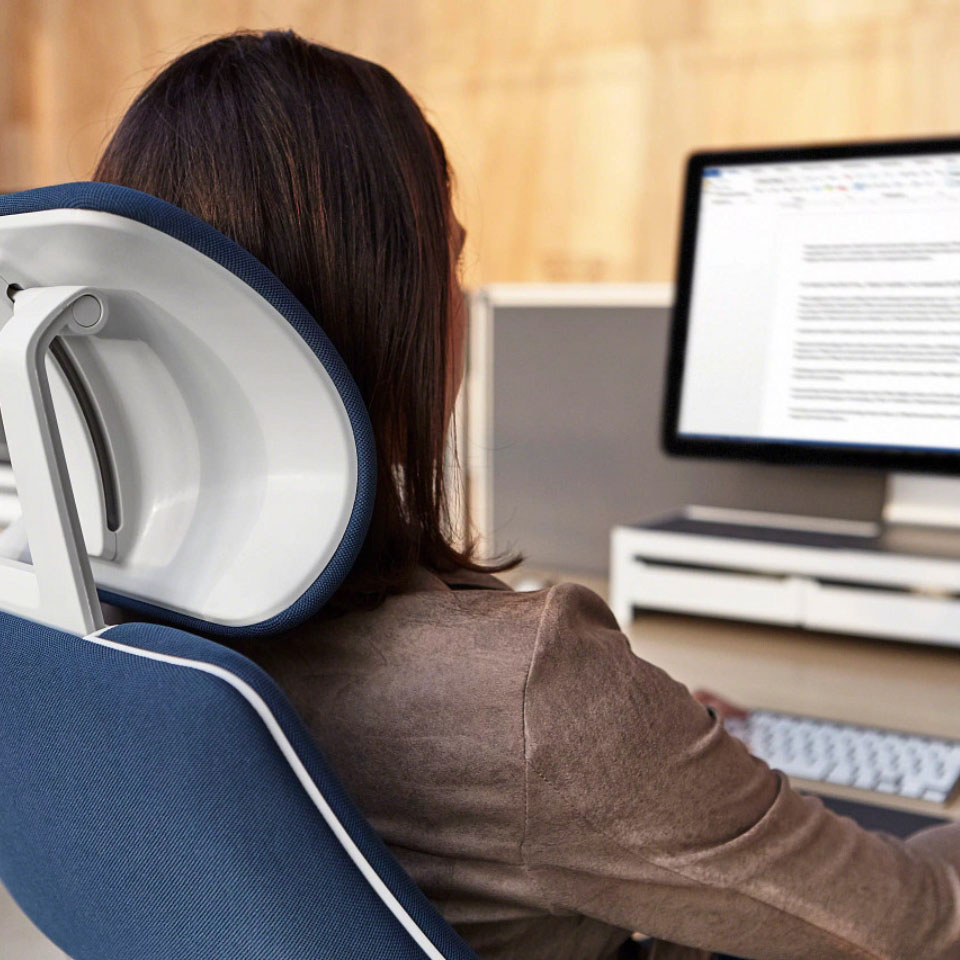Traditional office design was all about prioritising image over function. These days, the tables have turned and workspace design has become a whole lot more user-focused. Ergonomic office furniture and human-centric space-planning not only makes for a more productive and efficient workforce, it also provides a multitude of health benefits including the relief of neck injuries, spinal alignment issues and boosts subsequent mental wellbeing.
We’re spending more time than ever at the office which is why physical and mental health are such a crucial part of workspace planning and ergonomic design is as instrumental part of this.
What is ergonomic design?
In a nutshell, ergonomic design is the process of adapting a space to meet human requirements. You may have also heard it referred to as biotechnology, human engineering, biomechanics or anthropometry. It all involves the study of how the human body functions in order to design spaces, furniture and devices which reduce fatigue and discomfort to improve operability and productivity.
While an increased emphasis on this has emerged within the industry over the past decade, it certainly isn’t a new concept. In terms of ergonomic furniture design, it could be argued that it was in fact Charles Darwin who subconsciously invented the very first example. Darwin cunningly attached a set of wheels to his chair in order to move around his study more quickly and unknowingly inspired the development of the castors we all take for granted today.

Fast forward to the 1970’s when office furniture was really put into focus then meet us back in 2018 where leading manufacturers like Steelcase and Herman Miller are putting ergonomics at the centre of their design processes.
How ergonomic design can improve health in the workplace
According to data from the most recent Health & Safety Executive statistics, there were 507,000 cases of musculoskeletal disorders reported in 2016/2017 with 159,000 of these being new cases. The numbers also revealed that 31 million working days were lost during 2016/2017 and 8.9 million of these were directly related to musculoskeletal problems.
These are the kinds of issues that ergonomic design aims to combat so let’s look at a few of the most prominent health problems and how an ergonomic workspace can help to alleviate them.

Problem: Neck and back pain due to bad posture
Misalignment of the spine doesn’t only run the risk of severe neck pain and back problems, it can also impact the function of internal organs, including the digestive system.
Solution: Following their well-cited Global Posture Survey which discovered more than 9 new postures, Steelcase created the popular Gesture chair which is the first chair designed to support human interaction with a variety of technology. It’s Core, Limb and Seat Interfaces mean the chair mimics the movement of the human body to provide support when using a plethora of devices.

Problem: Decreased blood flow
Sitting for long periods of time can cut off circulation to the legs and decrease blood flow around the entire body which impacts both physical health and brain function.
Solution: Sit and Stand desks are a great way to encourage more movement throughout the day and will help keep blood and oxygen pumping around the body.

Problem: Musculoskeletal disorders
This encompasses issues with joints, soft tissue, ligament and muscle pain and is often a result of repetitive strain injury. This is something Italian physician, Bernardino Ramazzini was already touching on in his 1717 book, Disease of Workers.
Solution: A combination of ergonomic office solutions is what is needed to combat this in order to make repetitive tasks safer and more comfortable. For example, in the office, using wrist supports on mouse mats will reduce incidences of carpal tunnel syndrome which, according to the manufacturers of Handshoe Mouse, currently affects one in six office workers.

Problem: Cardiovascular diseases and heart problems
No matter how dynamic the workspace, office jobs often lead to very sedentary lifestyles. This persistent idleness can result in things like cardiovascular diseases, respiratory problems and diabetes after many years.
Solution: Again, Sit and Stand desks are the perfect way to encourage more movement but something like Ballo will also facilitate impromptu interaction and movement around the workspace. If staff are on the phone a lot, wireless headsets are a good way to get them out of their desks.

Problem: Headaches and eye strain
Headaches and problems with vision are issues that have long been synonymous with office jobs but there are a whole host of ergonomic designs now available that help to reduce the effects.
Solution: A desktop solution like Plurio enables users to set multiple monitors at optimal distances and heights to improve posture and also limit eye strain and subsequent headaches.
Read more about how to make an office more ergonomic here.
